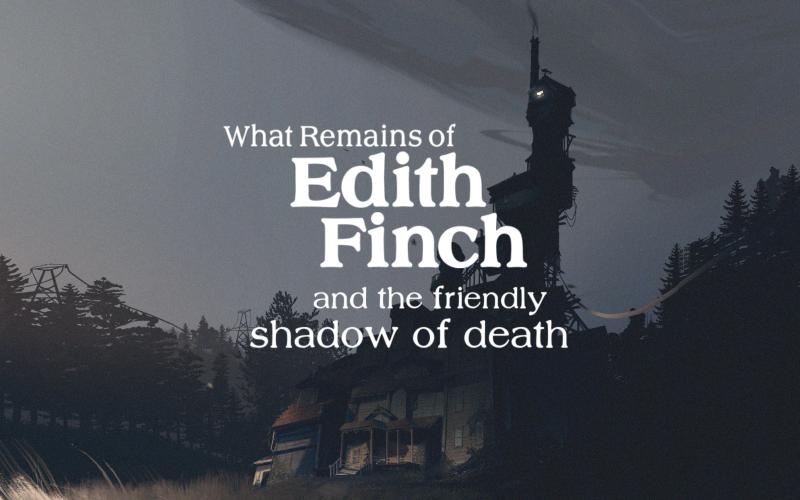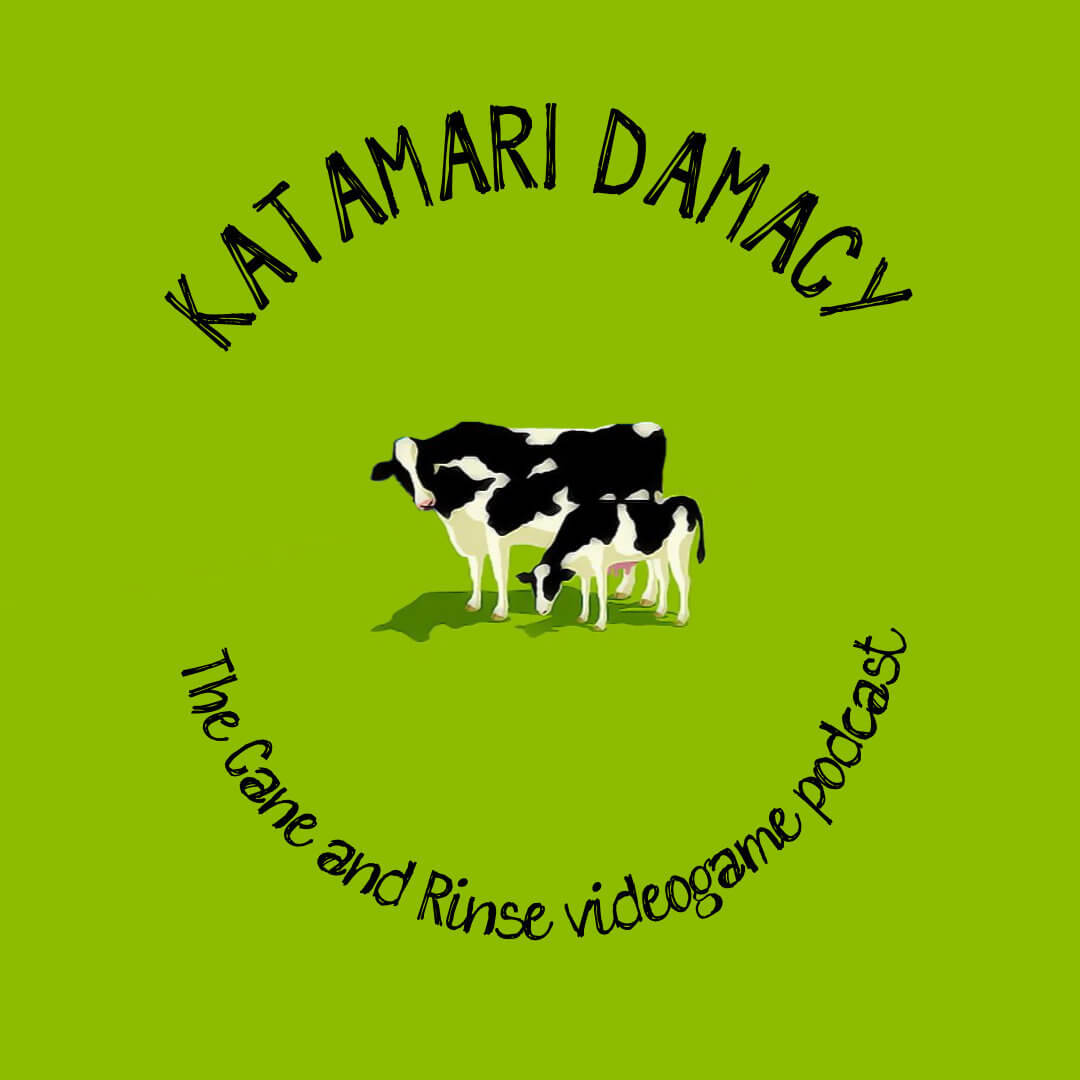In which Jacob Geller ponders gaming’s inextricably intertwined relationship with our inevitable expiration.
NB: Spoilers beyond. We recommend that you play through What Remains of Edith Finch before reading this piece.
I had a great-aunt named Agnes who, at 95 years old, lived alone in a second-story apartment. She was as healthy as a horse. She was completely independent, power-walked every morning, and was hit by a car while trekking through the snow one December in Minnesota.
This is all information I was told long after her death. I never knew my great-aunt Agnes. I also never met a first-cousin-once-removed named Vicky, who was in a car crash as a baby. She sailed clear through the window and landed safely in a cornfield nearby, while the driver, another relative of mine, was killed. At least, that’s what I heard.
These stories are almost legendary to me. They don’t really hold much emotional weight, but I’ve heard them recounted and embellished upon enough that they’re now part of my family mythos. Sincerely tragic events, deaths in the family, are now mostly curios for me to eventually pass on to my own kids.
Death is ubiquitous In What Remains of Edith Finch. This isn’t unusual in games. When dying is the fail state of everything from Mario to GTA, it’s easy to completely disconnect it from our real-life conceptions of the end of life.
Many games, like Hotline Miami and Super Meat Boy, have players die and try again so many hundreds of times that death doesn’t even result in a ‘Game Over’ screen. Retrying the same challenges with a new life is the more or less the primary game mechanic.
Of course, dying isn’t exclusive to the player. The common language of violence means that victory is also often determined by extinguishing life. Given a gun or an axe or bare fists, games frequently assume that the player understands that dispensing death is their main method of interaction. Often, only when everyone else is dead can the player progress.
But somewhat paradoxically, games still love to use death as a dramatic beat. Sarah’s death early in The Last of Us or Aerith in Final Fantasy 7 are held up as some of the pinnacles of game storytelling.
The player may have died dozens of times to get to that point in the game, and killed literally hundreds, but the story dictates that these particular deaths are of the utmost importance. And how could they not be? After all, they’re so sad, so painful. The music swells and the camera lingers on the pained looks on everyone’s polygonal faces.
In gamers’ quest to justify the medium as ‘art’ to the non-converted masses, the bleakness of death is frequently used as proof that these games should be taken seriously. There’s a frequent trap that criticism falls into, where the dour and disturbing are viewed as more worthy of prestige than less heavy subjects.
The trend is endemic enough in gaming that a trailer for The Last of Us II consisted almost exclusively of the suffering and torture of completely context-less characters. The message of the trailer, it seems, is that this game’s story will succeed because of how accurately it can depict pain.
What Remains of Edith Finch is a game about death, but it’s not about murder or pain. There’s no body count at the end of the game, no user error that can lead to an early demise. And yet, death is still inescapable. The plot sees Edith Finch, now 17 years old, returning to her childhood home. It’s a sprawling multi-generational building, a towering mess of spare rooms and secret passages. No one lives there anymore though. More rooms than not hold a shrine to a dead relative. Many of these shrines are for children. The Finches, apparently, are cursed.
Despite this, the house never feels particularly threatening. Edith never met most of her dead relatives. The last living branch of a long and cursed family tree, the player and Edith both get mythologized versions of most of her relatives. Molly, Edith’s great-aunt, was eaten by a monster. Calvin, her great-uncle, learned to fly right off a cliff. Gus, her uncle, was swept into a tornado. She learns these stories through poems and diaries and letters from psychologists. Her knowledge, and the player’s, is completely impersonal. Despite being directly related to each of them, her relatives are abstractions; their deaths are probably the most of the information she knows about them. Death is a bizarrely friendly houseguest, one that’s normalized by the telling and re-telling of family myths.
The Finch family’s relationship with death is extreme. Most of us probably didn’t spend too much time in graveyards as children; the Finches have one built in their backyard. And, as pointed out in an excellent essay by Joseph Anderson, this relationship to death doesn’t absolve anyone of responsibility. However, Edith doesn’t know the motivations of the family curse, nor even how unusual this morbid fascination is. Her childhood, living between the spaces of her mostly-deceased family, destigmatized the concept of mortality
She adapted to her environment better than some. Her great-uncle witnessed a murder as a child, and spent the next several decades living in a personal bunker under the house. But eventually even he grew accustomed to those ever-present thoughts of death.
“Even a monster on the other side of the door starts to feel normal. Almost friendly.”
Edith doesn’t spend time mourning her dead relatives. She fills her journal with their sketches and the stories of their unorthodox demises to pass down to her future children. Perhaps she should take their deaths a little more seriously. The fact that half of her family never made it past their teens isn’t due to a curse, it’s a pattern of neglect. And yet, I find the colloquial nature of their passing somehow refreshing. The game doesn’t overtly moralize. There are no grand lessons to be learned, no pleas to the audience in the credits.
Decades of pop culture have taught me how I’m supposed to deal with loss, but I’ve never felt like I’ve done it properly. I had a friend from high school die when he was 20. He was an enormously important person to me, someone whose behavior I emulated and encouragement I followed, and years later I still don’t know if I’ve actually dealt with his passing.
I didn’t cry when I got the news, and at his funeral I mostly was concerned with where I was supposed to stand. This felt wrong, it still does, but I don’t know what I was supposed to do instead. True mourning, real grief, seems somewhat alien to me.
What Remains of Edith Finch skips the gravitas that accompanies most depictions of death, but it doesn’t skip the compassion. Each family member had interests, passions, flaws and talents. Unlike games with astronomical body counts, everyone is a fleshed-out person here. Everyone matters. And yet, without disregarding their importance, the game is able to paint a picture of death beyond mourning, of time simply continuing to pass after the funeral.
By doing so, it has a tone unique among its peers, but common in our real life. Death just… exists. And we learn to exist too. It’s almost always tragic but sometimes it’s also funny, or bizarre, or ironically fitting. With a little effort and a lot of time, death can become a little less haunting. We can only sit shiva for so long.
More of Jacob Geller’s work can be found on his author page, and he’d love for you to poke him on twitter @yacobg42</em>
















